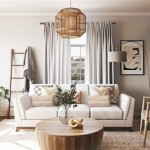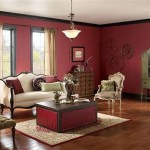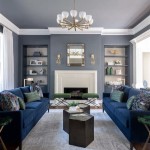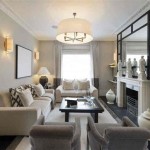The Enduring Appeal of Gray and White Modern Living Rooms
The gray and white modern living room is a design archetype that has maintained its popularity for several years, and its continued prevalence suggests a lasting appeal. This enduring aesthetic arises from its inherent versatility, adaptability, and capacity to create a space that feels both sophisticated and inviting. The careful combination of gray and white facilitates a blank canvas upon which individual personalities and design preferences can be projected, resulting in adaptable spaces that cater to diverse tastes and lifestyles.
The allure of this color scheme stems from its ability to transcend fleeting trends. While other colors might experience surges in popularity and subsequent decline, gray and white remain steadfast, anchoring living rooms in a timeless and classic style. The neutral palette contributes to a serene and balanced atmosphere, fostering a sense of calm and relaxation, which are highly desirable qualities in a space designed for both casual living and formal entertaining.
Versatility in Design Styles
The gray and white palette is not confined to a single design style. Its neutrality allows it to seamlessly integrate into a variety of aesthetics, from minimalist Scandinavian designs to more elaborate and luxurious contemporary arrangements. In a minimalist setting, the simplicity of the gray and white combination emphasizes clean lines and uncluttered spaces, promoting a sense of order and tranquility. Conversely, in a more opulent environment, these colors provide a subdued backdrop that allows richer materials and intricate details to take center stage.
For example, a Scandinavian-inspired living room might feature light gray walls, white furniture with light wood accents, and pops of natural greenery. In contrast, a modern transitional living room could incorporate darker shades of gray, white trim work, and metallic accents, creating a more dramatic and sophisticated feel. The adaptability of the color scheme means that it can be tailored to reflect specific design preferences without sacrificing its inherent elegance and sophistication. The choice of furniture styles, textures, and accessories further contributes to the overall aesthetic, allowing homeowners to personalize their spaces to their individual tastes.
Furthermore, the versatility extends to the integration of accent colors. While gray and white form the foundation, other colors can be introduced to add personality and visual interest. A vibrant splash of color, such as teal, mustard yellow, or even a deep burgundy, can transform the entire atmosphere of the room. These accent colors can be incorporated through throw pillows, artwork, rugs, or decorative accessories, providing an opportunity to experiment with different palettes and update the look of the room without undergoing a complete renovation.
The ability to seamlessly incorporate various textures and materials further enhances the versatility of the gray and white palette. The combination of smooth surfaces with rough textures, such as a plush rug or a woven throw, adds depth and visual interest to the space. The use of natural materials, such as wood, stone, or leather, further enriches the aesthetic and creates a more inviting and comfortable atmosphere. The interplay of different textures and materials is crucial in preventing the space from feeling sterile or monotonous, adding a layer of complexity and sophistication to the overall design.
Creating a Sense of Space and Light
One of the primary benefits of using gray and white in a living room is its ability to enhance the perception of space and light. White, in particular, is known for its reflective properties, which help to brighten the room and make it feel larger. The combination of white walls and light gray accents creates an airy and open atmosphere, which is especially beneficial in smaller living spaces. Even in larger rooms, the use of these colors can contribute to a sense of spaciousness and tranquility.
The strategic use of lighting is also crucial in maximizing the effect of these colors. Natural light is always preferable, and large windows or skylights can flood the room with sunlight, enhancing the brightness and openness of the space. However, even in rooms with limited natural light, the use of artificial lighting can effectively mimic the effect. Layered lighting schemes, incorporating ambient, task, and accent lighting, can create a warm and inviting atmosphere while also highlighting the architectural features of the room.
Furthermore, the choice of flooring can significantly impact the overall perception of space and light. Light-colored flooring, such as light wood or white tile, can further enhance the brightness and openness of the room. In contrast, darker flooring can create a more dramatic and sophisticated feel, but it is important to balance this with lighter wall colors and ample lighting to prevent the space from feeling too dark or cramped. The selection of rugs can also play a crucial role in defining the space and adding visual interest. A large area rug in a complementary color can anchor the furniture arrangement and create a focal point in the room.
The careful selection of furniture is also essential in optimizing the sense of space. Minimalist furniture designs with clean lines and slender profiles can help to prevent the room from feeling cluttered or overcrowded. The use of glass or acrylic furniture can also contribute to the sense of openness, as these materials allow light to pass through, visually expanding the space. The arrangement of furniture is also crucial. Avoiding overcrowding and maintaining clear pathways can help to create a more functional and comfortable living space.
The Psychological Impact of Neutral Colors
Beyond the aesthetic considerations, the gray and white color scheme also has a significant psychological impact on the occupants of the living room. Neutral colors are generally perceived as calming and relaxing, promoting a sense of tranquility and well-being. Gray, in particular, is associated with sophistication, balance, and neutrality. It is often seen as a mature and understated color, conveying a sense of stability and reliability. White, on the other hand, is associated with purity, cleanliness, and peace. It is often used to create a sense of order and clarity, promoting a sense of calm and serenity.
The combination of gray and white can create a space that feels both sophisticated and inviting, fostering a sense of comfort and relaxation. This is particularly important in the living room, which is often used for relaxation, socializing, and entertainment. The neutral palette provides a backdrop that is conducive to these activities, allowing occupants to unwind and de-stress in a comfortable and aesthetically pleasing environment. The absence of overly stimulating colors can also help to reduce visual fatigue and promote a sense of mental clarity.
Furthermore, the use of neutral colors can also contribute to a sense of timelessness. Unlike more trendy or vibrant colors, which can quickly become dated, gray and white remain steadfast in their appeal. This means that a gray and white living room is less likely to require frequent redecorating or renovation, making it a more sustainable and cost-effective choice in the long run. The ability to easily update the look of the room with accent colors and accessories also allows homeowners to personalize their spaces without undergoing major renovations.
The psychological benefits of a gray and white living room extend beyond the individual level. The neutral palette can also create a more welcoming and inclusive environment for guests. The absence of strong color preferences can help to make visitors feel more comfortable and at ease, fostering a sense of connection and camaraderie. The sophisticated and understated aesthetic can also convey a sense of refinement and elegance, creating a positive impression on guests.
In conclusion, the marriage of gray and white in modern living room design presents a compelling combination of aesthetic appeal, versatility, and psychological benefits. From enhancing the perception of space and light to promoting a sense of calm and well-being, this color scheme continues to resonate with homeowners seeking a timeless and sophisticated living environment. Its adaptability allows for personalization across various design styles, ensuring that the gray and white modern living room remains a relevant and desirable choice for years to come.

69 Fabulous Gray Living Room Ideas Walls Accent Colors Decoholic

35 Best Gray Living Room Ideas How To Use Paint And Decor In Rooms
40 White Living Room Ideas And Designs Renoguide N Renovation Inspiration

10 White Living Room Ideas For A Bright Inviting Space Decorilla Online Interior Design

15 Modern White And Gray Living Room Ideas Home Design Lover

17 Minimalist Living Room Design Ideas Extra Space Storage
40 White Living Room Ideas And Designs Renoguide N Renovation Inspiration

Grey And White Interior Design Inspiration From Scandinavia

Light Gray Walls And A Kitchen In Bright Historic Apartment Coco Lapine Designcoco Design

10 White Living Room Ideas For A Bright Inviting Space Decorilla Online Interior Design








